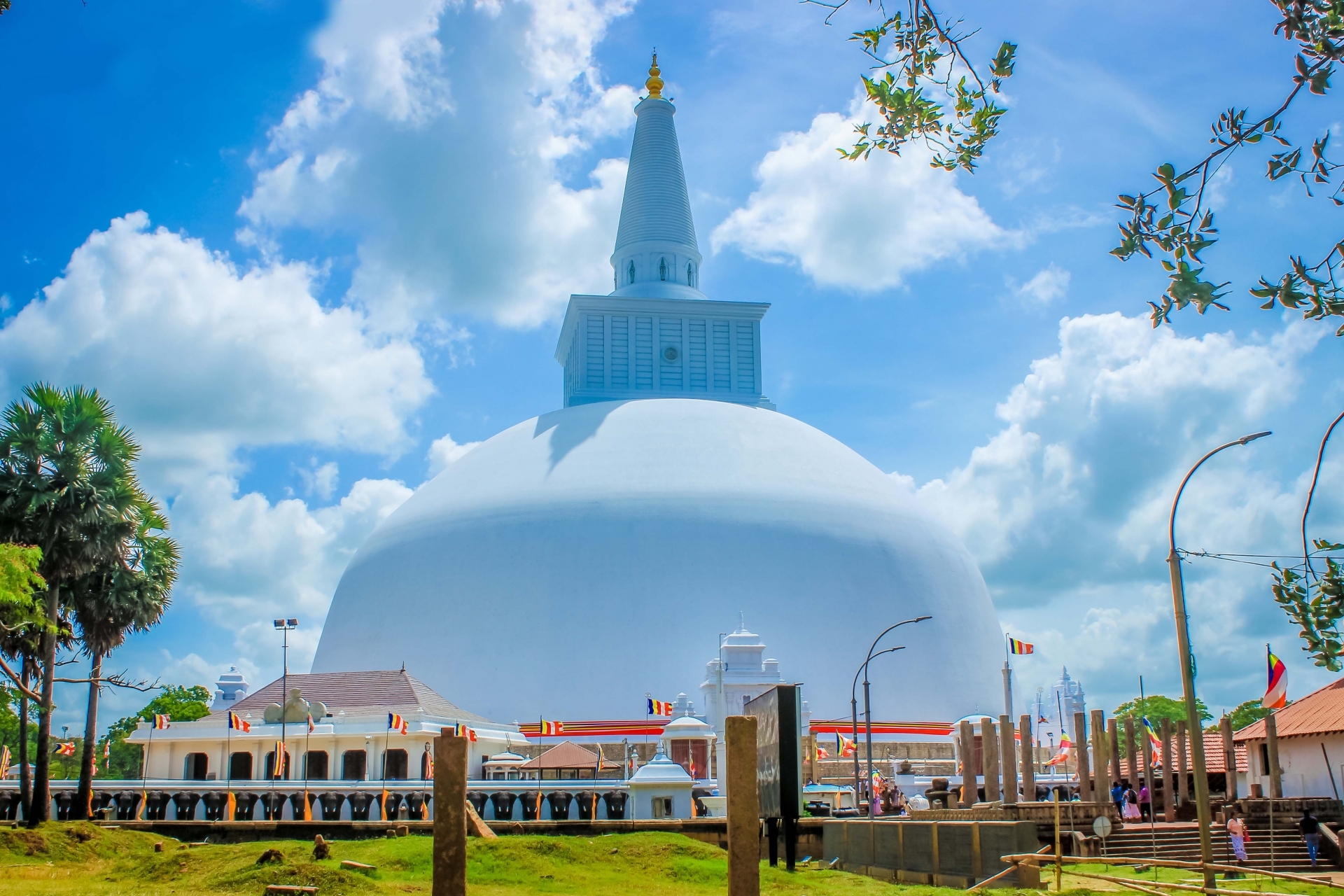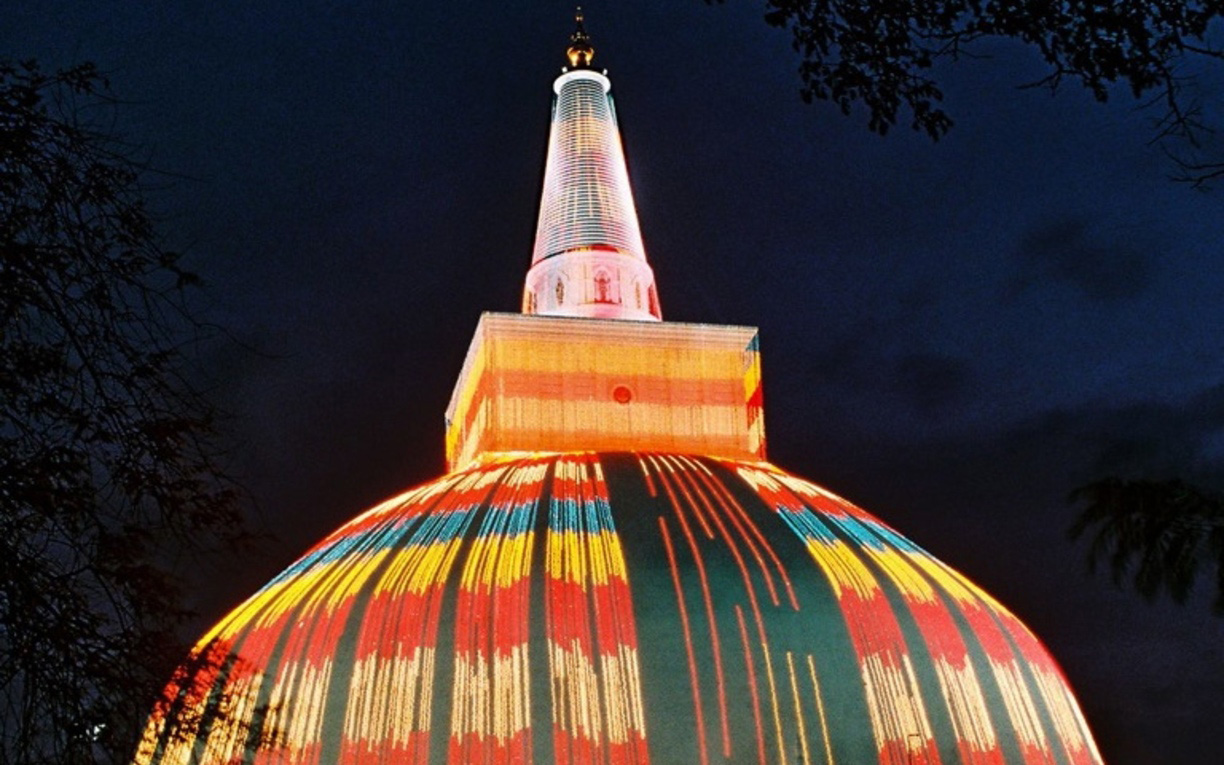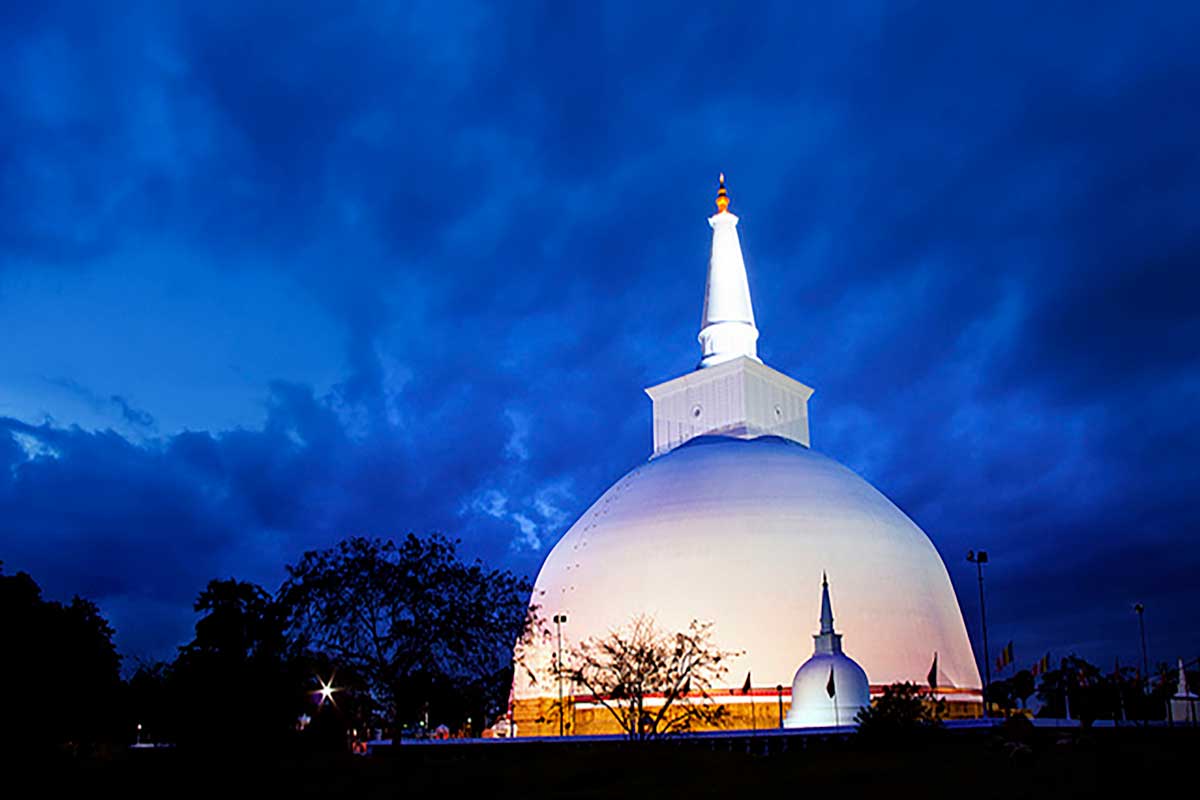The Ruwanwelisaya is a stupa and a hemispherical structure containing relics, in Sri Lanka, considered sacred to many Buddhists all over the world.Two quarts or one Drona of the Gothama Buddha's relics are enshrined in the stupa, which is the largest collection of his relics anywhere.It was built by King Dutugemunu c. 140 B.C., who became King of all Sri Lanka after a war in which the Chola King Elāra (Ellalan) was defeated. It is also known as "Mahathupa", "Swarnamali Chaitya", "Suvarnamali Mahaceti" (in Pali) and "Rathnamali Dagaba".
After The Buddha's Mahaparinibbāna, His relics were enshrined and revered in stupas by princes of eight countries two quarts in each country. The two quarts of relics that were enshrined in the village Rāmagāma were, according to The Buddha’s determination, destined to be enshrined in the Great Stūpa Ruvanveli. King Dutthagamini
(often spelled as Dutugemunu) who, on the full-moon day of the month of(June–July), under the constellation of
‘‘Uttarāsāḷha’’, would officiate in the ceremony for the enshrining of the relics in the Great Stupa, worshipped the Sangha
(Order of monks) on the day before the full-moon day, reminded them that tomorrow is the appointed day for the enshrining of the relics and requested them to give him the relics. The Saṅgha ordered then the novice Arahant Sonuttara, who was gifted with the six supernormal faculties, to procure the relics from
Naga-Loka realm, which Arahant Soṇuttara manages to visit and bring and offer to the Sangha.
Then king Dutthagamini received from the Sangha the Buddha’s relics upon his head in a casket and departed from the golden pavilion in the midst of manifold offerings and honours made by gods and ‘‘Brahmas’’. He circumambulated the relic-chamber three times, entered to it from the east, and when laid the relic-casket on a silver couch one ‘‘koṭi’’ worth, that was arranged in the north side. An image of the Buddha was then, according to the Buddha’s determination, created in the lion’s reclining posture (‘‘sīhaseyya’’), and all the relics were enshrined within that image. When the enshrining of the relics in the Great Stūpa Ruvanveli was completed, the two novices Uttara and Sumana closed the relic-chamber with the stone-blocks that were previously hidden to be used as a lid.



